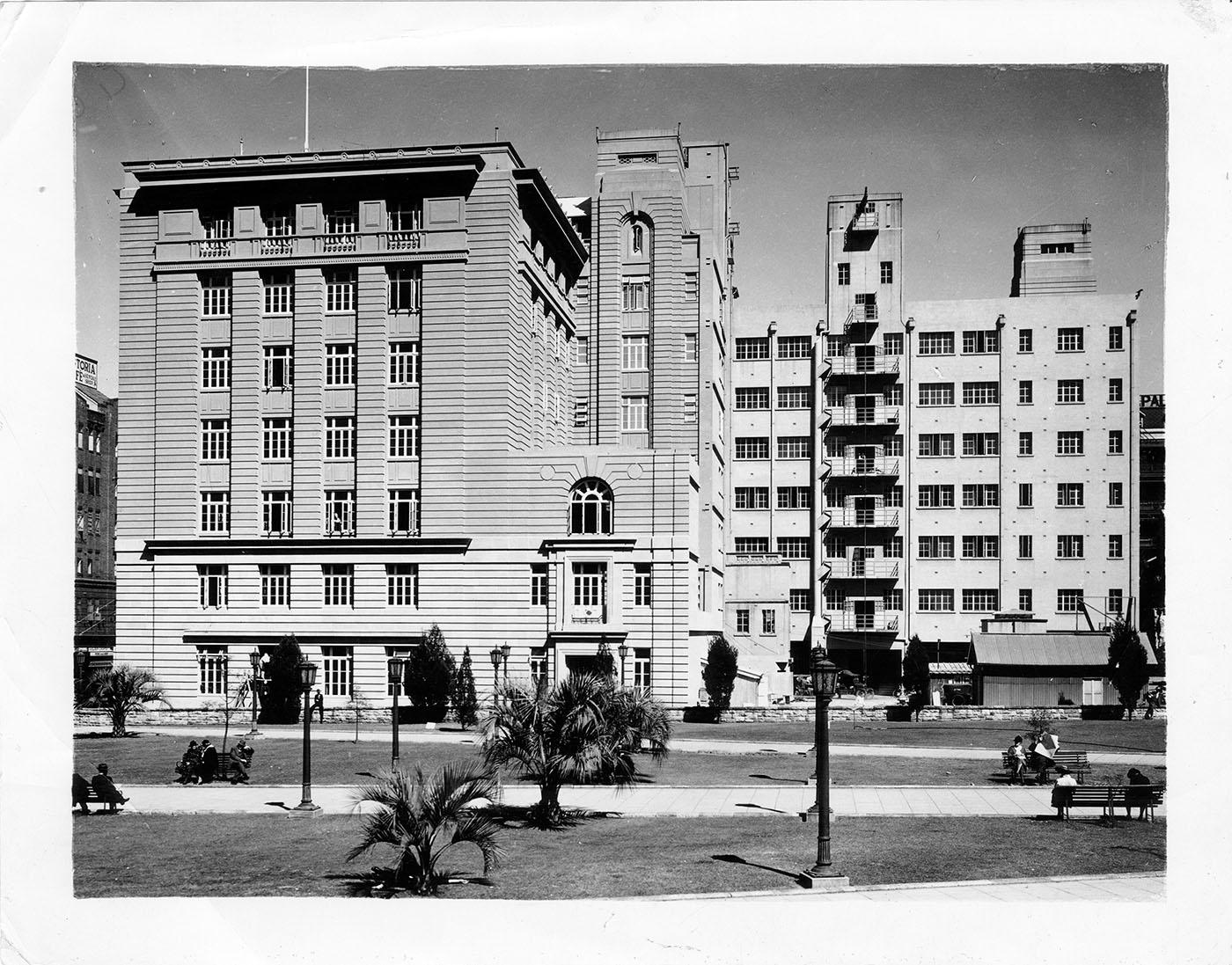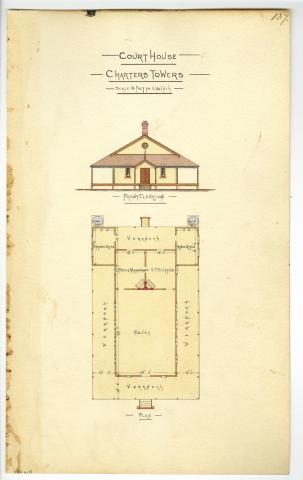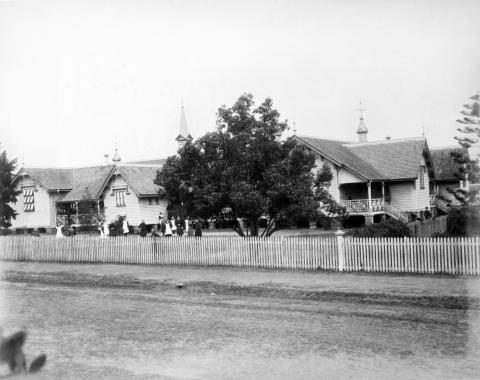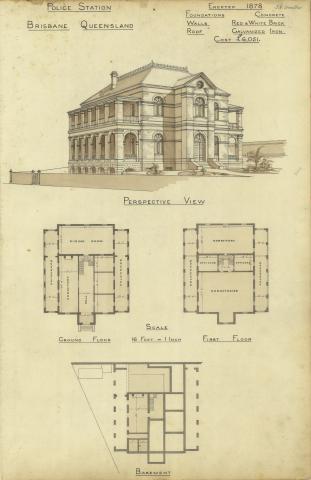
- News of the day
-
Courier-Mail, Wednesday 22 August 1934, page 13
City Improvement Plans. Street and Lane Extensions. "Noble Square" for Brisbane
The report in The Courier-Mail that the zoning committee of the City Council proposed to revive schemes for the extension of Adelaide Street through George Street to North Quay, and for the widening of Isles Lane between Queen and Adelaide streets, aroused much interest among town planners and others interested in civic development, yesterday.
Mr. Roy Tritton, of F. Tritton, Pty., Ltd., recalled that in 1921 his firm had made a gift to the Council of a strip of land six feet wide and 150 feet in length, extending from North Quay back a good portion of the way to George Street, with a view to facilitating the extension of Adelaide Street. Business people in that area would welcome the extension, and the public would be given better traffic facilities.
This view was endorsed by Mr. A. P. Jones, president of the Grand Council of Progress Associations, who said he was strongly in favour of the extension. Adelaide Street never should have been a blind street. Personally he visualised a wider, bolder plan. A natural corollary to the extension of Adelaide Street was the widening of North Quay from the point where Adelaide Street would join it to the alignment of William Street. This would have a tremendous influence in relieving traffic congestion in Queen Street, and would make an easy sweeping passage for vehicular traffic through to the south side.
ANZAC SQUARE AND LANE WIDENING.
Mr. Jones said many people would regret to see the council proceed with the widening of Isles Lane— between Queen and Adelaide streets — because within the life of the younger generation Anzac Square would be carried through to Queen Street, thus providing Brisbane with one of the noblest squares of any city in Australia. If a large sum of money were expended on the widening of this lane now it would throw back the larger project for many years.
The president of the Town Planning Association (Mr. T. Prentice), opposed the widening of Isles Lane for a different reason. "As a town planner," he said, "I recognise that this must ultimately be done. For the time being, however, it is too expensive a move."
Discussing the Adelaide Street North Quay extension proposal Mr. Prentice endorsed the general opinion that this should be undertaken without delay. The council, however, should refer to the admirable plan drawn up by Mr. Nowland, architect of the Works Department, some years ago. This made provision for the acquisition of certain buildings facing North Quay to provide a wide area approaching Victoria Bridge. No good purpose could be served by making a wrong beginning.
Business men in George and Adelaide Streets emphasised that the State Government should make an earnest effort to remove the railway building, the Police Court and lock-up at the earliest opportunity, to enable the long overdue extension of Adelaide Street to be undertaken.
BRISBANE'S "MARTIN PLACE"
The proposal to widen Isles Lane found a vigorous supporter in the Deputy Director of Posts and Telegraphs (Mr. Corbett).
A wide central thoroughfare opposite the Anzac Square Memorial would be the most convincing argument for a post office building worthy of the place, he remarked, Mr. Corbett glanced across the street from his office window.
"Look at that ramshackle lane!" he said. "Could you imagine anything more incongruous than a stately building facing that place?"
The time and the situation, he continued, offered Brisbane a unique opportunity to have a Martin Place at a trifling fraction of the cost of Sydney's. “It could be done for a song now, and if the authorities do not sing that song they will rue their silence. Only a very few years from now they will have to pay millions for what they can have now for next to nothing.”
Sydney delayed until the widening of Martin Place cost millions of pounds, said Mr. Corbett. Now, when property values were ridiculously low, the project should be pushed through. Conditions were Improving, and the low values would not last long. Buildings on the site of the extension of Isles Lane, from the lane to the Primary Producers' Bank, would soon have to be pulled down to make way for the bigger structures the city's growth required. There could be no better time than the present. Postal business gave a very fair gauge of prosperity. Already the figures were coming very near to the figures of good times. In a year or a little more they were expected to be right back to normal.
The money paid for resumptions would remain in the State, and would pass into circulation and employment, Mr. Corbett continued. The amount of new building that would be done as a result of the project would be of tremendous value to the city and the State. When the work was completed Brisbane would have one of the finest city centres in the world - Anzac Square, flanked by the Commonwealth and State Government buildings, and with a new Central Station in the rear, linked with Queen Street by a broad thoroughfare of tall modern stores and offices.
- Background
-
The Former Queensland Government Offices (Anzac Square Building) was built in stages commencing in 1931 and completed by 1959. It forms an integral part of the design by JS Murdoch, Chief Architect of the Commonwealth, for the block bounded by Edward, Ann, Creek and Adelaide streets and consisting of separate state and federal government offices flanking a memorial square.
Prior to the construction of the Queensland Government Offices the site was occupied by the old Normal School, near the Edward and Adelaide streets corner, and a fire station at the corner of Edward and Ann streets. The land for the Normal School was originally granted in 1852 to the Board for National Education. Further grants were made to the Board of General Education in 1861. The Normal School opened in 1863. The school acquired more land along the Ann Street frontage in 1871 but in 1889 the allotment at the corner of Ann and Edward Streets was dedicated for a Fire Brigade Station Reserve. A fire station, designed by HW Atkinson, was built in 1890.
The Commonwealth Government owned much of the remaining part of the block. Around 1910 it was investigating a proposal to create a square in front of the Central Railway Station [QHR 600073] that would serve as a fitting entrance to the city. The idea of a square dedicated to the memory of the Anzacs was first raised soon after the Gallipoli campaign in 1916. A committee was formed in 1919 by Lt Col DC Cameron to lobby for the creation of a commemorative square that would occupy the entire block. In 1921 the Commonwealth Standing Committee on Public Works decided to erect a National War Memorial as part of the redevelopment of the block.
In 1923 JS Murdoch proposed a layout for the block which included a central square flanked by rectangular office blocks of similar appearance. An alternative design was produced by the former Deputy Government Architect Lt Col T Pye later in the same year. This scheme, featuring a semicircular drive with triangular planned offices in the northern and western corners of the site, was sent to the federal government for consideration.
Murdoch subsequently sent three alternative designs to the Brisbane City Council and the State Public Works Department. One of these was adopted to coordinate the design of the block. Design guidelines were established allowing for the construction of seven-storeyed buildings consisting of a two-storeyed base faced in granite and sandstone and upper walls of brick or concrete rendered to imitate stone. Detailed design and documentation of the Queensland Government Offices was carried out by the Architectural Branch of the Queensland Public Works Department, in accordance with the guidelines, under the supervision of AB Leven. Elevations were designed to match the proposed Commonwealth Government Offices [QHR 600064].
By 1928 land in the centre of the block, with frontages to Ann and Adelaide Streets of 228 feet, was dedicated for the purpose of public park under the control of Brisbane City Council. A national competition held in 1928 to design the Anzac memorial and square was won by Sydney architects Buchanan and Cowper. By 1929 the designs of Anzac Square and the Queensland Government Offices had been finalised. Anzac Square was opened in 1930 [QHR 600062].
The Normal School and adjacent Army Drill shed were demolished by 1930. The site was excavated at the corner of Edward and Adelaide streets in preparation for the first stage of construction of the new Queensland Government Offices; Units 1 and 2. In the final design a two-storeyed podium formed the base for six five-storeyed towers connected by a corridor which wrapped around a central courtyard. Each tower block constituted a unit. Eighteen tenders were received on March 25, 1931 for the construction of Unit 1, located in the centre of the Edward Street facade, and Unit 2, on the Edward and Adelaide streets corner.
The lowest tenderer, AH Mason with a price of 19 3844 pounds 13 shillings, was accepted on April 14 1931. The contract time was two years. Emphasis was placed on the use, where possible, of local products in line with the government's "Queensland Made" policy. Timbers such as silky oak, Queensland satiny, rose walnut, yellow wood ash, rose mahogany, maple and walnut bean were incorporated into the designs for parquetry flooring and wall panelling in the various offices. Many of the public spaces were lined with marble supplied by the Ulam Quarries near Rockhampton. Services in the new building included lifts, intercommunicating telephone systems, pneumatic despatch tube system, mechanical ventilation and vacuum-cleaning system. Units 1 and 2 were occupied by the Public Curator and the State Government Insurance Office in June 1933.
Construction of Unit 3 commenced in 1934, using day labour, and was finished by 1937. The design took advantage of the street frontages in Units 1, 2 and 3 by including small shops and an arcade on the ground floors of the Edward and Adelaide Street elevations.
During 1940/41 approval was given to proceed with the construction of the fourth unit. This unit, located in the centre of the Anzac Square frontage, was to accommodate the Titles Office, Stamp Duties Office, State Advances Corporation and Bureau of Rural Development. Despite a pressing need for office accommodation, work was stopped due to war induced shortages of materials, especially steel. In 1944 the exposed steel frame was encased in concrete and a concrete floor was poured to provide weather protection for the frame. Construction proceeded slowly and Unit 4 was not finished and fully occupied until 1948.
Tenders were called during 1948 for the final stage of the building, Units 5 and 6 on Ann Street. The contract was let but it was not expected to be finished for two years due to shortages. The fire station was demolished in 1950 and the site excavated. Work halted in 1952 due to restrictions of Loans Funds. Building recommenced in 1954 and was completed by 1960.
Courtesy of Queensland Heritage Register
/153.0264612,-27.4674109,7/450x450@2x.png?access_token=pk.eyJ1IjoicXNhLWRpc2NvLXFsZCIsImEiOiJjamJmdTgyZXEyeWNjMnlxZm8xcmtieHgxIn0.lmT9J5tTPKGuuccQgCVSAg)



